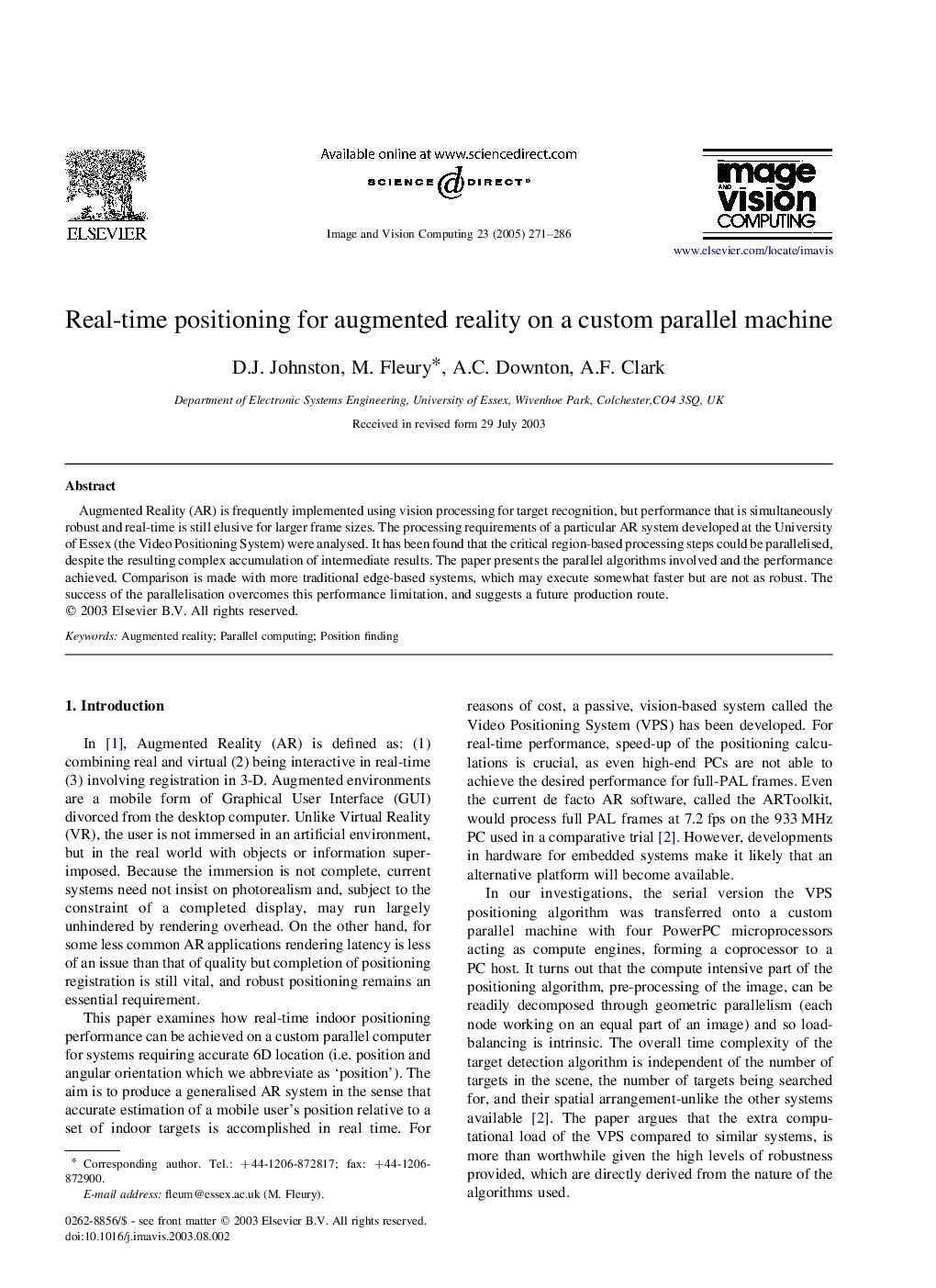| Article ID | Journal | Published Year | Pages | File Type |
|---|---|---|---|---|
| 10359648 | Image and Vision Computing | 2005 | 16 Pages |
Abstract
Augmented Reality (AR) is frequently implemented using vision processing for target recognition, but performance that is simultaneously robust and real-time is still elusive for larger frame sizes. The processing requirements of a particular AR system developed at the University of Essex (the Video Positioning System) were analysed. It has been found that the critical region-based processing steps could be parallelised, despite the resulting complex accumulation of intermediate results. The paper presents the parallel algorithms involved and the performance achieved. Comparison is made with more traditional edge-based systems, which may execute somewhat faster but are not as robust. The success of the parallelisation overcomes this performance limitation, and suggests a future production route.
Keywords
Related Topics
Physical Sciences and Engineering
Computer Science
Computer Vision and Pattern Recognition
Authors
D.J. Johnston, M. Fleury, A.C. Downton, A.F. Clark,
